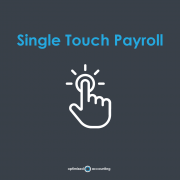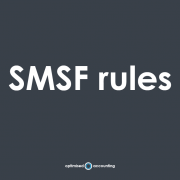
We’ve summarised the key 1st July 2021 changes and their implications.
Most of them relate to superannuation:
Super guarantee rate increase to 10%
On 1 July 2021, the Superannuation Guarantee (SG) rate will rise from 9.5% to 10% – the first rise since 2014. It will then steadily increase each year until it reaches 12% on 1 July 2025.
The 0.5% increase does not mean that everyone gets an automatic pay increase, this will depend on your employment agreement. If your employment agreement states you are paid on a ‘total remuneration’ basis (base plus SG and any other allowances), then your take home pay might be reduced by 0.5%. That is, a greater percentage of your total remuneration will be directed to your superannuation fund. For those paid a rate plus superannuation, then your take home pay will remain the same, but your superannuation fund will benefit from the increase. If you are used to annual increases, the 0.5% increase might simply be absorbed into your remuneration review.
Employers will need to ensure that they pay the correct SG amount in the new financial year to avoid the superannuation guarantee charge. Where employee salaries are paid at a point other than the first day of the month, ensure the calculations are correct across the month (i.e., for staff paid on the 15th of the month they are paid the correct SG rate for June and July in their pay and not just the June rate).
Superannuation salary packaging arrangements will also need to be reviewed – employers should ensure that the calculations are correct and the SG rate increase flows through.
Annual superannuation guarantee rate changes
| SG rate | |
| 1 July 2020 – 30 June 2021 | 9.5% |
| 1 July 2021 – 30 June 2022 | 10% |
| 1 July 2022 – 30 June 2023 | 10.5% |
| 1 July 2023 – 30 June 2024 | 11% |
| 1 July 2024 – 30 June 2025 | 11.5% |
| 1 July 2025 – 30 June 2026 | 12% |
New stapled superannuation employer obligations for new staff
Currently, when an employer hires a new staff member, the employee is provided with a Choice of Fund form to identify where they want their superannuation to be directed. If the employee does not identify a fund, the employer directs their superannuation into a default fund.
When someone has multiple funds, it often erodes their balance through unnecessary fees and often insurance. And, as at 30 June 2020, there was $13.8 billion of lost and unclaimed superannuation in accounts across Australia.
From 1 July 2021, where an employee does not identify a fund, legislation before Parliament will require the employer to link the employee to an existing superannuation fund. That is, an employee’s superannuation fund will become ‘stapled’ to them. An employer will not simply be able to set up a default fund, but instead will be required to request that the ATO identify the employee’s stapled fund. If the ATO confirms no other fund exists for the employee, contributions can be directed to the employer’s default fund or a fund specified under a workplace determination or an enterprise agreement (if the determination was made before 1 January 2021).
Legislation enabling this measure is currently before the Senate.
Indexation increases contribution caps and the transfer balance cap
Indexation ensures that the caps on superannuation that limit how much you can transfer into super and how much you hold in a tax-free retirement account, remain relevant by making pre-determined increases in line with inflation. To trigger indexation, the consumer price index (CPI) needed to reach 116.9. Australia reached 117.2 in December 2020 triggering increases to the contribution and transfer balance caps from 1 July 2021. The next increase will occur when a December quarter CPI reaches 123.75.
Concessional and non-concessional contribution caps
From 1 July 2021, the superannuation contribution caps will increase enabling you to contribute more to your superannuation fund (assuming you have not already reached your transfer balance cap).
The concessional contribution cap will increase from $25,000 to $27,500. Concessional contributions are contributions made into your super fund before tax such as superannuation guarantee or salary packaging.
The non-concessional cap will increase from $100,000 to $110,000. Non-concessional contributions are after tax contributions made into your super fund.
The bring forward rule enables those under the age of 65 to contribute three years’ worth of non-concessional contributions to your super in one year. From 1 July 2021, you will be able to contribute up to $330,000 in one year. Total superannuation balance rules will continue to apply. However, if you have utilised the bring forward rule in 2018-19 or 2019-20, then your contribution cap will not increase until the three year period has passed.
| 1 July 2017 – 30 June 2021 | After 1 July 2021 | ||
| Total Superannuation Balance (TSB) | Contribution and bring forward available | Total Superannuation Balance (TSB) | Contribution and bring forward available |
| Less than $1.4m | $300,000 | Less than $1.48m | $330,000 |
| $1.4M -$1.5m | $200,000 | $1.48M – $1.59m | $220,000 |
| $1.5M – $1.6m | $100,000 | $1.59M – $1.7m | $110,000 |
| Above $1.6m | Nil | Above $1.7m | Nil |
Transfer balance cap – why you will have a personal cap
The transfer balance cap (TBC), as the name suggests, limits how much money you can transfer into a tax-free retirement account. From 1 July 2021, the general TBC will increase from $1.6m to $1.7m but not everyone will benefit from the increase.
From 1 July 2021, there will not be a single cap that applies to everyone. Instead, every individual will have their own personal TBC of between $1.6 and $1.7 million, depending on their circumstances.
If your superannuation is in accumulation phase before 1 July 2021, that is, you have not started taking an income stream (pension), then your cap will be the fully indexed amount of $1.7m.
However, if you have started taking an income stream – you have retired or are transitioning to retirement – then your indexed TBC will be calculated proportionately based on the highest ever balance of your account between 1 July 2017 and 30 June 2021. The closer your account is to the $1.6m cap, the less impact indexation will have. For anyone who reached the $1.6m cap at any time between 1 July 2017 and 30 June 2021, indexation will not apply and your cap will continue to be $1.6m. For example, if you are transitioning to retirement and drawing a pension, and your highest ever balance in your retirement account was $1.2m, then indexation only applies to $400,000 (the $1.6m cap less your highest very balance). In this case, your new personal TBC will be $1,625,000 after indexation.
| My super is… | TBC to 30 June 2021 | TBC from 1 July 2021 |
| In accumulation phase | $1.6m | $1.7m |
| In retirement phase and I reached the $1.6m cap limit between 1 July 2017 and 30 June 2021 | $1.6m | $1.6m |
| In retirement phase and I have never reached the $1.6m cap limit at any time between 1 July 2017 and 30 June 2021 | $1.6m | $1.6m plus indexation on the amount between your highest ever balance and the $1.6m cap. |
The Australian Taxation Office (ATO) will calculate your personal TBC based on the information lodged with them (this will be available from your myGov account linked to the ATO). If your superannuation is in retirement phase, it will be very important to ensure that your Transfer Balance Account compliance obligations are up to date. For Self-Managed Superannuation Funds (SMSFs), it is essential that you let us know about any changes that impact on your transfer balance account, for example if a member of your fund retires.
The total super balance caps to utilise the spouse contribution offset and the government co-contribution will also be lifted to $1.7m in line with indexation
Minimum superannuation drawdown rates
The Government has announced an extension of the temporary reduction in superannuation minimum drawdown rates for a further year until 30 June 2022.
| Age | Default minimum drawdown rates | 2019-20, 2020-21 & 2021-22 reduced rates |
| Under 65 | 4% | 2% |
| 65-74 | 5% | 2.5% |
| 75-79 | 6% | 3% |
| 80-84 | 7% | 3.5% |
| 85-89 | 9% | 4.5% |
| 90-94 | 11% | 5.5% |
| 95 or more | 14% | 7% |
Single touch payroll reporting
Single touch payroll will apply to most businesses from 1 July 2021, this will include small businesses (those with 19 or fewer staff) and businesses with closely held employees (e.g., directors of family companies, salary and wages for family employees of businesses). No further extensions will be granted.
For employers with closely held employees, there are some concessions on how reporting is managed with the option to report one of three ways: reporting actual payments in real time, reporting actual payments quarterly or reporting a reasonable estimate quarterly. These concessions allow a level of flexibility in relation to determining and making payments to closely-held payees. However, if your business is impacted, it will be important to plan throughout the year to prevent problems occurring at year end.
Company tax rate decreasing to 25%
The lower company tax rate for base rate entities will be 25% from the 2021–22 income year.
A base rate entity is a company that both:
- Has an aggregated turnover less than the aggregated turnover threshold – which is $25 million for the 2017–18 income year and $50 million for the 2018–19 to 2021–22 income years.
- 80% or less of their assessable income is base rate entity passive income (such as interest, dividends, rent, royalties and net capital gain) – this replaces the requirement to be carrying on a business.
This paragraph is from the ATO website which can be found here.
Minimum wage increase
From 1st July 2021 the national minimum wage has increased to $20.33 per hour (up from $19.84) or $772.60 per week (up from $753.80).
The increase came from the back of a Fair Work Commission ruling to increase the national nimumum wage by 2.5 per cent, with the following exceptions:
- Wages in the Retail Award, which will increase from 1 September 2021.
- Wages in 21 other awards in which the Fair WOrk Commission deemed there were exceptional circumstances will increase from 1 November 2021.
More details from Fair Work here.
You already knew the news that would affect your business
We make sure what you need to know is in your inbox before it becomes urgent. Subscribe to our newsletter to be ahead of the curve:










